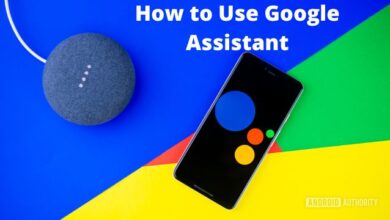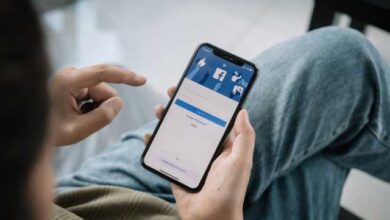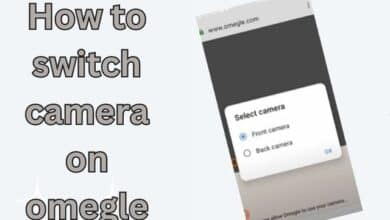Android 13 Features: Google Testing Amazing User Profile
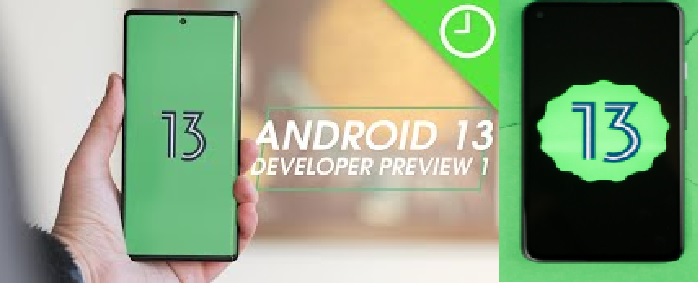
In Android 13 Features DP2, a new API controls whether or not you need to unlock your device to control a smart home device. For years, Android has had strong multi-profile support, which is especially useful on shared devices.
However, the functionality hasn’t changed much in recent history, and Google occasionally seems to forget it – Google TV, which is based on Android, didn’t get multi-profile support until October of last year happened. Fortunately, it appears that some improvements are being made for Android 13 Features.
The second developer preview of Android 13 was released last week, and while no profile-related features are available by default, some experimental changes are still being tested.
When the ‘flag user switcher chip’ flag is enabled in System UI, a new profile picker button appears in the status bar, displaying a list of available profiles when pressed.
This is just the beginning of Android 13 Features, and we’ll have plenty more to share as the release date approaches. Read on for a taste of what’s new, and head over to the developer site for information on Pixel downloads and the release timeline.
As always, it’s critical to get your feedback early so that we can incorporate it into the final release.
Android 13 Features
A new full-screen user profile switcher is also in the works, possibly for devices with larger screens. It can be manually enabled by setting the configuration value ‘configurable enable Full screen User Switcher’ to true.
There’s also a new settings menu for creating user profiles, with several color options to choose from if you don’t want to use a profile picture.
It’s unclear whether the new profile features will be enabled for everyone in the final Android 13 build, or if Google will hold off until a later release. It’s possible that some (or all) of the new features will be available only on tablets, where profiles are most likely to be used, but we’ll have to wait and see.
On the lock screen, there’s also a profile switcher, which has been in testing since the first Android 13 Developer Preview.
Runtime permissions for app notifications, improved Japanese text wrapping, a new text conversion API for languages such as Japanese, COLR fonts, MIDI 2.0, Bluetooth LE audio, and other changes are also included in Developer Preview 2.
12L feature drop, now in AOSP
Before we get into Developer Preview 2, let’s recap last week’s news: we’ve officially released the 12L feature drop to AOSP, and it’ll be rolling out to all supported Pixel devices over the next few weeks.
12L improves on Android 12 by including updates such as a new taskbar that allows users to instantly drag and drop apps into split-screen mode, new large-screen layouts in the notification shade and lock screen, and improved app compatibility modes.
Starting later this year, 12L will be available in planned updates on Samsung, Lenovo, and Microsoft tablets and foldable, so make sure your apps are ready.
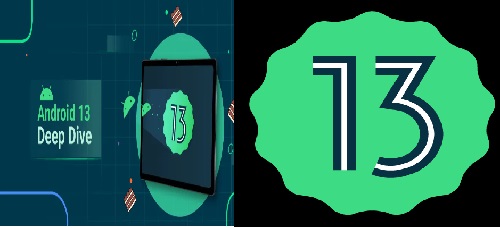
We strongly advise you to test your apps in split-screen mode with windows of varying sizes, as well as in different orientations, and to check for new compatibility mode changes if they apply.
The best part is that the large screen features in 12L are foundational in this, so you can develop and test on Android 13 Features while knowing you’re also covered for tablets running Android 12L.
People see large screens as an important surface for the future of Android, and we’re continuing to invest in providing you with the tools you need to create great experiences for tablets, Chromebooks, and foldable.
Privacy and user trust

People want an operating system and apps they can entrust with their most personal and sensitive information, as well as the resources on their devices.
Privacy and user trust are core product principles for Android, and in this, we’re continuing to focus on building a responsible and high-quality platform for all by providing a safer environment on the device and more controls to the user.
Here’s a rundown of what’s new in Developer Preview 2.
Notification permission
It introduces a new runtime permission for sending notifications from an app, to help users focus on the notifications that are most important to them. Before posting notifications, apps targeting Android 13 Features will need to request notification permission from the user.
The system will handle the upgrade flow for apps targeting Android 12 or lower. The flow will be fine-tuned further. We encourage you to target Android 13 Features as soon as possible and request the notification permission in your app to provide more context and control for your users.
Read Also- Web 2.0 and Web 3.0 Technology Standards: Affluent Comparison
Developer downgradable permissions
Some apps may no longer require permissions previously granted by the user to enable a specific feature, or they may retain a sensitive permission from an earlier Android version. We’re introducing a new API in Android 13 Features that will allow your app to protect user privacy by downgrading previously granted runtime permissions.
Safer exporting of context-registered receivers
We required developers to declare the exportability of manifest-declared Intent receivers in Android 12. We’re asking you to do the same for context-registered receivers in this by adding either the RECEIVER EXPORTED or RECEIVER NOT EXPORTED flag when registering receivers for non-system sources.
This helps to ensure that receivers aren’t available for other applications to send broadcasts to unless explicitly requested. While not required in Android 13, declaring exportability is a good first step toward securing your app.
Developer productivity

We’re working on giving you more tools in Android 13 to help you deliver a polished experience and better performance for users. Here are some of the changes included in today’s release.
Improved Japanese text wrapping
For more polished and readable Japanese applications, Text Views can now wrap text by Bunsetsu (the smallest unit of words that sounds natural) or phrases, rather than by character. You can use Android to benefit from this wrapping: Text Views with line Break Word Style=””
Improved line heights for non-Latin scripts
It improves the display of non-Latin scripts (such as Tamil, Burmese, Telugu, and Tibetan) by using language-specific line heights. The new line heights prevent clipping and improve character positioning.
Simply targeting Android 13 will allow your app to benefit from these enhancements. When using the new line spacing, make sure to test your apps because changes may affect your UI in non-Latin languages.
Text Conversion APIs
People who speak languages such as Japanese and Chinese use phonetic lettering input methods, which frequently slow down searching and features such as auto-completion.
Apps in this can use the new text conversion API to help users find what they’re looking for faster and easier. Previously, searching required a Japanese user to-
- Enter Hiragana as the phonetic pronunciation of their search term (for example, a place or app name)
- Use the keyboard to convert the Hiragana characters to Kanji.
- Re-search using the Kanji characters to
- Obtain their search results. With the new text conversion API, Japanese users can type in Hiragana and see live Kanji search results, bypassing steps 2 and 3.
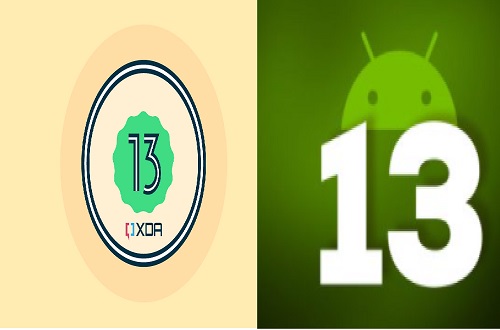
Color vector fonts
It adds support for COLR version 1 fonts (spec, intro video) and updates the system emoji to the COLRv1 format.
COLRv1 is a brand-new, ultra-compact font format that renders quickly and crisply at any size. For the vast majority of apps, this will simply work; the system will handle everything. Beginning with Developer Preview 2, you can enable COLRv1 for your app.
We recommend opting in and testing emoji rendering if your app implements its own text rendering and uses the system fonts. More information about COLRv1 can be found in the Chrome announcement.
Bluetooth LE Audio
Low Energy (LE) Audio is the next-generation wireless audio technology designed to replace Bluetooth classic while enabling new use cases and connection topologies.
Users will be able to share and broadcast their audio to friends and family, as well as subscribe to public broadcasts for information, entertainment, and accessibility.
It is intended to provide users with high-fidelity audio without sacrificing battery life, as well as the ability to seamlessly switch between different use cases that were not possible with Bluetooth Classic.
Because It includes built-in support for LE Audio, developers should be able to use the new features on compatible devices for free.
MIDI 2.0
It introduces support for the new MIDI 2.0 standard, as well as the ability to connect MIDI 2.0 hardware via USB. This revised standard includes features such as increased controller resolution, improved support for non-Western intonation, and more expressive performance using per-note controllers.
App compatibility
We strive to make updates faster and more seamless with each platform release by prioritising app compatibility as we roll out new platform versions.
We’ve made app-facing changes opt-in to give you more time in Android 13, and we’ve updated our tools and processes to help you get ready faster.
With Developer Preview 2, we’re well into the release and still working to improve overall stability, so now is the time to try out the new features and changes and provide feedback.
We’re especially interested in feedback on our APIs, as well as details on how platform changes affect your apps.
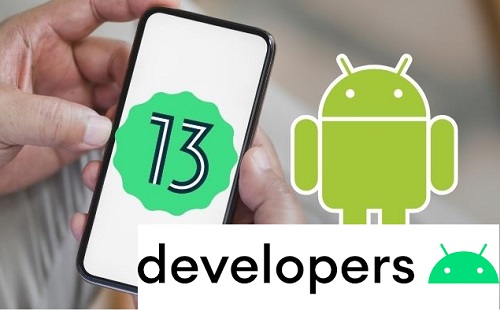
It’s also a good time to begin compatibility testing and identify any work that needs to be done. We recommend starting the work as soon as possible so that you can release a compatible update by Android 13 Beta 1.
There’s no need to change your app’s target Sdk Version at this time, but we do recommend using the behavior change toggles in Developer Options to get a sense of how opt-in changes in Android 13 might affect your app.
All app-facing system behaviors, SDK/NDK APIs, and non-SDK lists will be finalized by the time we reach Platform Stability in June 2022. After that, you can complete your final compatibility testing and publish a fully compatible version of your app, SDK, or library.
Conclusion
The Developer Preview includes everything you need to experiment with Android 13 features, test your apps, and provide feedback. You can begin right now by flashing a device system image to a Pixel 6 Pro, Pixel 6 5G, Pixel 5, Pixel 4a (5G), Pixel 4a, Pixel 4 XL, or Pixel 4 device.
If you don’t have a Pixel device, you can use the 64-bit system images in Android Studio Dolphin with the Android Emulator. GSI images are available for even more extensive testing. If you’ve already installed a preview build on your Pixel device, you’ll receive this update, as well as any subsequent previews and Betas, over the air.

Q- Is there going to be an Android 13?
A- According to Google’s plans, Android 13 will be released in the third quarter of 2022. Before the final release in Q3, there will be two developer previews and four betas. With the third beta release in June 2022, Android 13 is expected to achieve Platform Stability.
Q- Is Android 13 a must-have?
A- Surprisingly, the Dragon Ball manga acknowledges the existence of Androids 13–15 (likely as cross promotion for Dragon Ball Z movie 7,) but no designs appear in the manga.
Q- What is the identity of Fusion Android 13?
A- Super Android 13 is also known as Merged Android 13 or Fusion Android 13. Cell refers to it in Raging Blast 2 as Android 13’s Perfect Form, which he compares to his own because both are achieved by an Android absorbing other androids (or their components in 13’s case) to grow stronger and transform.
Q- Will the Galaxy S10 receive Android 13?
A- Given that the S9 and S9 Plus were released with Android Oreo, this means that Android 10 will be the final update for them. The Galaxy S10 series will receive its final update in the form of Android 12. Meanwhile, the Galaxy S20, S20 Plus, S20 Ultra, and S20 FE will receive Android 13 in the near future.
Q- Will the Pixel 4a be upgraded to Android 13?
A- When Android 13 is released later this year, it will be available to a wide range of Android phones, but for the time being, you can only install the Android 13 Developer Preview on a number of compatible Pixel devices, including the Pixel 4. Google Pixel 4 XL. 4A Pixel


